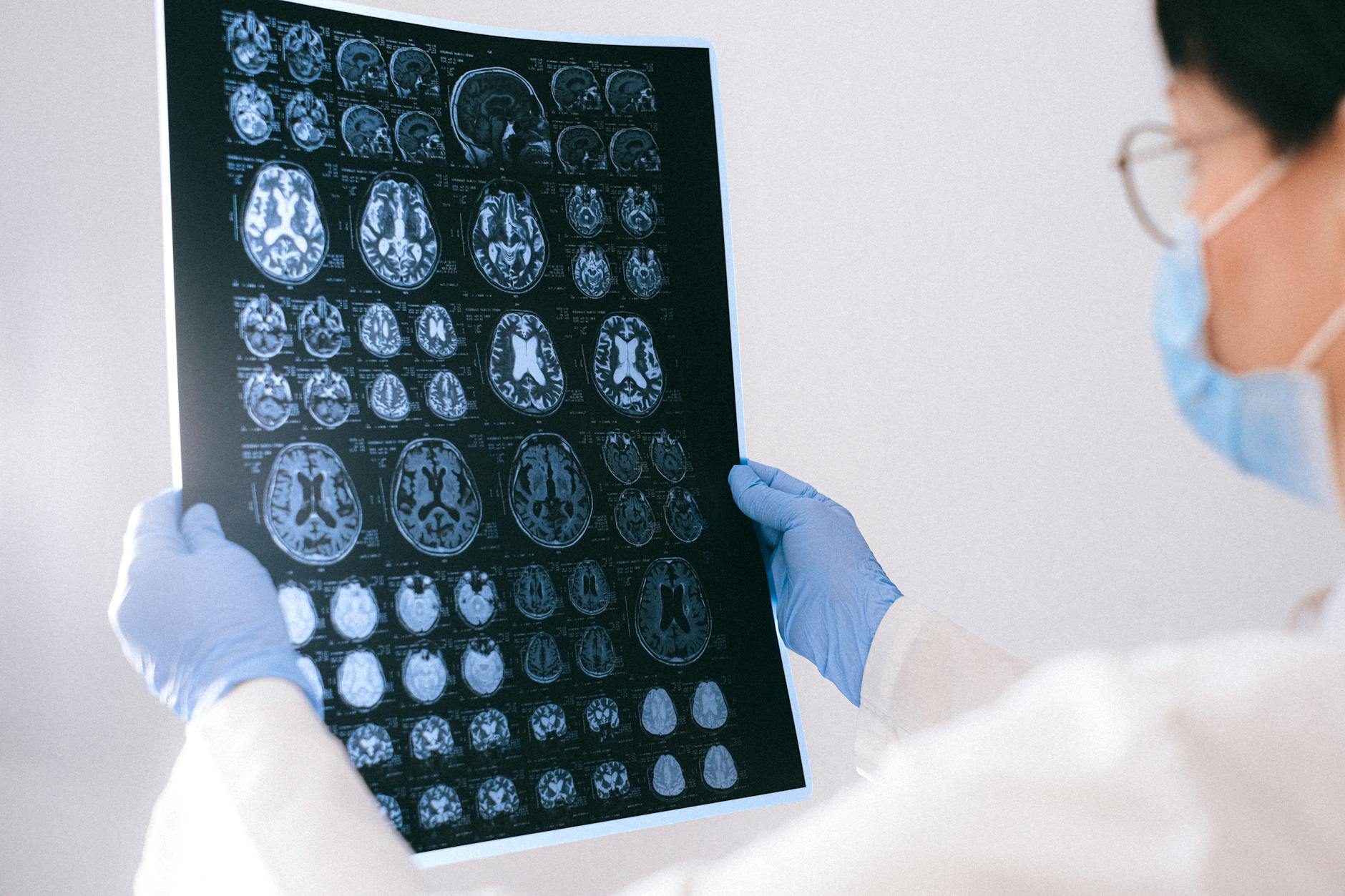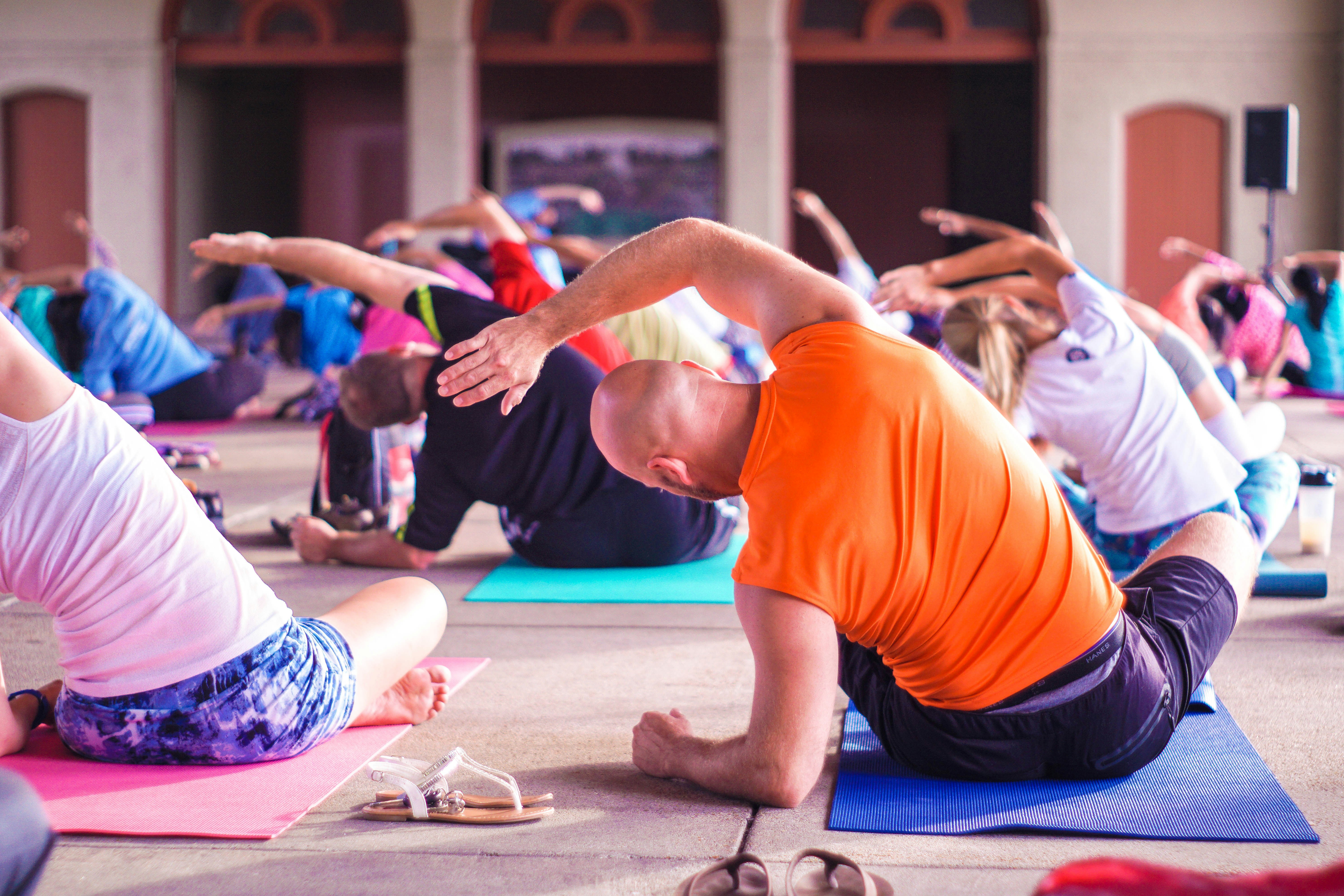Home Remedies For Knee Pain At 82 Years And Beyond
Discover effective home remedies for knee pain at 82 and beyond. Find relief with exercise, therapies, and more!

Knee Pain Relief Options
When it comes to finding relief for knee pain, there are various options available that can help alleviate discomfort and improve mobility. These options include exercise, low-impact activities, weight management strategies, heat and cold therapy, herbal remedies and supplements, as well as medical treatments. Let's explore each of these options in more detail.
Exercise for Knee Pain Relief
Exercise plays a crucial role in managing knee pain, especially in older adults. Strengthening exercises can help improve the stability of the knee joint and support daily activities such as walking or standing up. Simple exercises like the seated hip march and walking, even with stiff or sore knees, can be beneficial for individuals experiencing knee pain in old age. These exercises can help ease joint pain, strengthen leg muscles, improve posture, flexibility, and heart health.

Low-Impact Activities
Engaging in low-impact activities is another effective way to relieve knee pain, particularly for older adults. Low-impact exercises are gentle on the knees and help reduce stress on the joints. Activities such as biking, swimming, and water aerobics are excellent choices as they provide cardiovascular benefits without placing excessive strain on the knees. Water exercises, in particular, can be beneficial as they take weight off painful joints, allowing for improved mobility and pain relief [1].
Weight Management Strategies
Maintaining a healthy weight is essential for managing knee pain, especially in older individuals. Excess weight can increase the pressure on the knee joints, leading to an increased risk of developing osteoarthritis. Weight management through dietary changes and regular exercise can help reduce pressure on the knees, alleviate pain, and slow the progression of arthritis. Every extra pound of weight adds about 4 pounds of pressure on the knees, so even a small weight loss can make a significant difference in reducing knee pain [2].
Heat and Cold Therapy
Applying heat or cold to the affected knee can provide temporary relief from pain and inflammation. Heat therapy, using a heating pad or warm compress, can help relax the muscles and increase blood flow to the area, promoting healing and reducing discomfort. On the other hand, cold therapy, such as ice packs or cold compresses, can help reduce inflammation and numb the area, providing relief from pain. Paraffin and ointments containing capsaicin are other options for applying heat and cold to the knee.
Herbal Remedies and Supplements
Certain herbal remedies and supplements have shown promise in relieving knee pain. Ginger extract, for example, has been found to help reduce arthritis pain when used alongside prescription treatments. A 2015 study demonstrated positive effects of ginger in managing arthritis pain. However, it's important to consult with a healthcare professional before incorporating any herbal remedies or supplements into your treatment plan to ensure their safety and effectiveness.
Medical Treatments
In some cases, medical treatments may be necessary to manage severe or chronic knee pain. Medications, such as nonsteroidal anti-inflammatory drugs (NSAIDs) or corticosteroids, can help reduce pain and inflammation. Additionally, massage therapy and acupuncture have been found to provide pain relief for individuals with knee osteoarthritis. These treatments can help improve circulation, reduce muscle tension, and promote relaxation. It's important to consult with a healthcare professional to determine the most appropriate medical treatment for your specific condition [2].
By exploring these various knee pain relief options, individuals can find a combination of strategies that work best for them. It's important to remember that what works for one person may not work for another, so it may require some trial and error to find the most effective approach. Additionally, consulting with a healthcare professional can provide personalized recommendations and ensure the safety and effectiveness of the chosen methods.
Exercise for Knee Pain Relief
When it comes to managing knee pain, exercise can play a crucial role in providing relief and improving mobility. Regular exercise can help strengthen the muscles around the knee, increase flexibility, and reduce pain. In this section, we will explore three types of exercises that are beneficial for knee pain relief: strengthening exercises, stretching exercises, and Tai Chi.
Strengthening Exercises
Strengthening exercises are key to supporting the knee joint and reducing pain. By strengthening the muscles around the knee, individuals can improve stability and protect the joint from further damage. Here are a few examples of strengthening exercises that can be beneficial:
Stretching Exercises
Stretching exercises are important for improving flexibility and maintaining joint mobility. They can help alleviate stiffness and reduce the risk of pain and injuries. Here is an example of a stretching exercise that can benefit individuals with knee pain:
Tai Chi for Pain Management
Tai Chi, an ancient Chinese martial art, is recommended as a treatment option for knee pain by the American College of Rheumatology and Arthritis Foundation [2]. It involves slow and gentle movements combined with deep breathing and meditation. Tai Chi can help reduce pain, increase range of motion, and promote relaxation, potentially aiding in the management of chronic pain.
By incorporating these exercises into a daily routine, individuals can experience improvements in knee pain and overall mobility. It is important to consult with a healthcare professional or physical therapist before starting any exercise program, especially if you have existing knee conditions or injuries. They can provide personalized guidance on the most suitable exercises for your specific needs and ensure you are performing them correctly to prevent further harm.
Low-Impact Activities
For individuals experiencing knee pain in old age, engaging in low-impact activities can be beneficial in managing pain and maintaining mobility. These activities are gentle on the knees while still providing effective exercise. In this section, we will explore the benefits of low-impact activities, recommend specific exercises, and discuss therapeutic exercises that can be performed at home.
Benefits of Low-Impact Activities
Low-impact activities offer numerous benefits for individuals with knee pain. These activities help to reduce stress on the joints while still providing an opportunity for exercise and movement. Some key benefits include:
- Joint-Friendly: Low-impact exercises are gentle on the knees, minimizing the risk of further joint damage or exacerbation of pain.
- Improved Mobility: Regular participation in low-impact activities can help maintain joint flexibility and range of motion, allowing for improved mobility.
- Muscle Strengthening: These activities help strengthen the muscles around the knee, providing better support and stability to the joint.
- Cardiovascular Fitness: Many low-impact exercises provide cardiovascular benefits, improving heart health and overall fitness levels.
Recommended Low-Impact Exercises
When it comes to low-impact exercises for knee pain relief, there are several options to consider. Some recommended exercises include:
- Walking: Walking is a simple yet effective exercise that can be easily incorporated into daily routines. It helps ease joint pain, strengthen leg muscles, improve posture, flexibility, and heart health.
- Swimming: Swimming is a fantastic low-impact exercise that takes weight off painful joints. The buoyancy of water reduces stress on the knees while providing a full-body workout.
- Cycling: Cycling, whether on a stationary bike or outdoors, is another low-impact activity that can be beneficial for individuals with knee pain. It helps strengthen the leg muscles without placing excessive stress on the knees.
- Water Aerobics: Water aerobics classes offer a fun and effective way to exercise while minimizing joint impact. The water's buoyancy supports the body and reduces strain on the knees.
Therapeutic Exercises at Home
In addition to low-impact exercises, there are specific therapeutic exercises that can be performed at home to help alleviate knee pain. These exercises focus on strengthening the muscles around the knee joint and improving flexibility. Some examples include:
- Quadriceps Strengthening: Straight leg raises, seated knee extensions, and wall squats are exercises that target the quadriceps, the muscles at the front of the thigh. Strengthening these muscles can provide better support to the knee joint.
- Hamstring Stretches: Gentle hamstring stretches can help improve flexibility and relieve tension in the back of the thigh. This can be done by sitting on the edge of a chair and extending one leg out while keeping the heel on the floor.
- Calf Raises: Calf raises involve lifting yourself onto your toes and then slowly lowering back down. This exercise helps strengthen the calf muscles, which in turn provide support to the knee joint.
Remember to consult with a healthcare professional or physical therapist before starting any new exercise regimen, especially if you have existing knee pain or medical conditions. They can provide personalized guidance and recommend exercises that are suitable for your specific needs.
By incorporating low-impact activities and therapeutic exercises into your routine, you can help manage knee pain, improve joint function, and maintain an active lifestyle.
Weight Management Strategies
When it comes to managing knee pain, particularly in older adults, weight management plays a crucial role. Excess weight can exert significant pressure on the knee joints, increasing the risk of developing osteoarthritis. Therefore, implementing weight management strategies can help alleviate knee pain and reduce the burden on the joints.
Impact of Weight on Knee Pain
Carrying extra weight places additional stress on the knees. For every extra pound of weight, approximately 4 pounds of pressure is exerted on the knees with each step. This increased pressure can hasten the breakdown of cartilage in the knee joints, leading to pain and discomfort [4]. Overweight individuals are at a higher risk of developing knee osteoarthritis, with overweight women having nearly 4 times the risk and overweight men having a risk 5 times greater than non-overweight individuals.
Importance of Weight Loss
Weight loss can significantly alleviate knee pain by reducing the pressure on the knee joints. Even a modest weight loss can have a positive impact. Studies suggest that losing just 10 pounds can slow the progression of arthritis and provide relief from knee pain, especially in overweight individuals. Furthermore, preliminary studies indicate that even small amounts of weight loss can reduce the risk of developing knee osteoarthritis and lead to substantial pain reduction in those already affected by the condition [4].
Dietary Approaches for Knee Pain Relief
Implementing dietary changes is an essential component of weight management for knee pain relief. Here are some dietary approaches that can help:
- Caloric Deficit: Creating a caloric deficit by consuming fewer calories than you burn can contribute to weight loss. Focus on consuming nutrient-dense foods while reducing your intake of processed and high-calorie foods.
- Balanced Nutrition: Ensure your diet includes a variety of fruits, vegetables, whole grains, lean proteins, and healthy fats. These foods provide essential nutrients while helping to control calorie intake.
- Portion Control: Pay attention to portion sizes to avoid excessive calorie consumption. Use smaller plates and practice mindful eating to better gauge your hunger and fullness cues.
- Hydration: Stay hydrated by drinking an adequate amount of water throughout the day. Water can help support overall health and may aid in weight management.
- Consult a Healthcare Professional: For personalized guidance, consult with a healthcare professional or registered dietitian who can develop a tailored dietary plan to support weight loss and knee pain relief.
By adopting a holistic approach that combines weight management strategies with other knee pain relief options, individuals can experience improved mobility, reduced pain, and enhanced overall well-being.
Heat and Cold Therapy
When it comes to managing knee pain, heat and cold therapy can provide effective relief for individuals experiencing discomfort. Heat therapy helps to alleviate knee pain, while cold therapy is particularly useful for reducing inflammation. Additionally, there are alternative methods for applying heat and cold to the knee that can offer relief.
Heat Therapy for Knee Pain
Heat therapy is a popular and effective method for relieving knee pain. Applying heat to the affected area can help relax muscles, improve blood circulation, and reduce stiffness. One common way to apply heat is by using a heating pad. Simply place the heating pad on the knee and adjust the temperature to a comfortable level. It's important to follow the manufacturer's instructions to ensure safe and proper use.
Other options for heat therapy include paraffin treatments and ointments containing capsaicin. Paraffin treatments involve immersing the knee in warm paraffin wax, which helps to soothe pain and improve joint mobility. Ointments containing capsaicin, a compound found in chili peppers, can also provide a warming sensation when applied to the knee. These topical treatments should be used according to the instructions provided.
Cold Therapy for Inflammation
Cold therapy is beneficial for reducing inflammation and swelling in the knee. Applying cold to the affected area helps to numb the area and constrict blood vessels, thereby reducing pain and swelling. One of the simplest ways to apply cold therapy is by using an ice pack or a bag of frozen vegetables wrapped in a thin towel. Apply the cold pack to the knee for about 15-20 minutes at a time, making sure to take breaks in between to prevent tissue damage.
Alternative options for cold therapy include cold gel packs and sprays. Cold gel packs can be stored in the freezer and applied to the knee as needed. Cold sprays provide a quick and cooling sensation when sprayed onto the affected area. It's important to follow the instructions provided with these products to ensure safe and effective use.
By incorporating heat and cold therapy into your knee pain management routine, you can experience relief and improve your overall comfort. Whether you choose heat therapy to relax muscles or cold therapy to reduce inflammation, these methods can be effective in alleviating knee pain. Remember to consult with a healthcare professional if you have any underlying health conditions or concerns before trying these therapies.
Note: The information provided here is for informational purposes only and should not replace professional medical advice. Always consult with a healthcare professional for personalized guidance and treatment options.
Herbal Remedies and Supplements
When it comes to managing knee pain, some individuals may seek relief through herbal remedies and supplements. While these options may not work for everyone, they have shown promising results for certain individuals. In this section, we will explore two popular choices: ginger extract and CBD oil, along with other herbal remedies that may provide relief.
Ginger Extract for Arthritis Pain
Ginger extract has been found to help reduce arthritis pain when used alongside prescription treatments. A 2015 study showed positive effects of ginger in managing arthritis pain [2]. Ginger contains compounds with anti-inflammatory properties, which may help alleviate pain and discomfort in the joints.
To incorporate ginger into your routine, you can try adding fresh ginger to your meals or preparing ginger tea. Some individuals also find relief by taking ginger supplements, but it's important to consult with a healthcare professional before starting any new supplements to ensure they are safe and suitable for you.
CBD Oil for Joint Pain
Cannabidiol (CBD) oil, derived from the cannabis plant, has gained attention for its potential benefits in managing various health problems. While clinical trials have not yet proven its safety or effectiveness for use in rheumatic diseases, animal studies have suggested that it may improve joint pain.
CBD oil is believed to have anti-inflammatory properties, which could potentially reduce pain and inflammation in the joints. However, it's essential to note that regulations and research surrounding CBD oil are still evolving. If you are considering using CBD oil for knee pain, it is advisable to consult with a healthcare professional who can provide guidance tailored to your specific needs.
Other Herbal Remedies
In addition to ginger extract and CBD oil, there are several other herbal remedies that individuals have found helpful in managing knee pain. While the scientific evidence for these remedies may be limited, some people have reported positive results. Some commonly mentioned herbal remedies for knee pain relief include:
- Turmeric: Known for its anti-inflammatory properties, turmeric may help reduce pain and swelling in the joints. It can be consumed as a spice in cooking or taken as a supplement.
- Boswellia: Also known as Indian frankincense, boswellia has been used in traditional medicine to alleviate joint pain and inflammation.
- Devil's Claw: This herb has anti-inflammatory properties and is used by some individuals to manage osteoarthritis pain.
- Willow Bark: Similar to aspirin, willow bark contains a compound called salicin, which may help reduce pain and inflammation.
It's important to remember that herbal remedies and supplements may interact with medications or have side effects. It's recommended to consult with a healthcare professional before incorporating any herbal remedies or supplements into your routine.
While herbal remedies and supplements may provide relief for some individuals, it's crucial to approach them with caution. It's always best to consult with a healthcare professional who can provide personalized advice based on your specific needs and medical history.
Medical Treatments
When it comes to managing knee pain, there are various medical treatments available that can provide relief for elderly individuals. These treatments may include medications, massage therapy, and acupuncture.
Medications for Knee Pain
Medications can play a significant role in managing knee pain, particularly when caused by arthritis. Non-steroidal anti-inflammatory drugs (NSAIDs) are commonly prescribed to reduce pain and inflammation. Examples of NSAIDs include ibuprofen and naproxen, which are available over-the-counter or online. However, it's important to consult with a healthcare professional before starting any medications, as they can have side effects and may interact with other medications or existing health conditions.
In addition to NSAIDs, there are other medications that may provide relief for knee pain. Acetaminophen is an option for managing pain, while duloxetine may be prescribed to help with pain management. It's worth noting that opioids are generally not recommended for long-term use, except for tramadol. Always follow the guidance of a healthcare professional when taking medications for knee pain.
Massage Therapy for Pain Relief
Massage therapy, including self-massage techniques, can be beneficial for relieving knee pain. While current guidelines do not specifically recommend massage as a treatment for knee osteoarthritis, it may offer additional benefits such as stress management. Massaging the thigh muscles can have a positive impact on the knee and help alleviate pain.
If considering massage therapy for knee pain relief, it's advisable to consult with a qualified massage therapist who has experience working with individuals with knee issues. They can provide targeted massage techniques to address the specific needs of the knee area and surrounding muscles.
Acupuncture for Knee Osteoarthritis
Acupuncture is an alternative treatment that may help individuals with knee osteoarthritis. It involves the insertion of thin needles into specific points on the body to stimulate the body's natural healing response. Research suggests that acupuncture can provide pain relief and improvements in function as an adjunctive therapy for knee osteoarthritis.
A study involving 570 participants found that true acupuncture sessions scored higher in pain and function compared to sham acupuncture sessions. The American College of Rheumatology and the Arthritis Foundation also acknowledge that acupuncture may help ease knee pain. If considering acupuncture as a treatment option, it's important to seek out a qualified and licensed acupuncturist for safe and effective treatment.
While medical treatments can offer relief for knee pain, it's important to consult with healthcare professionals to determine the most suitable approach based on individual needs and circumstances. A comprehensive treatment plan may include a combination of medical interventions, physical therapy, and lifestyle modifications to effectively manage knee pain and improve overall quality of life.
References
[1]: https://www.webmd.com/osteoarthritis/ss/slideshow-knee-exercises
[2]: https://www.healthline.com/health/pain-relief/knee-pain-home-remedies
[3]: https://www.webmd.com/fitness-exercise/top-exercises-knee-pain
[4]: https://www.hopkinsarthritis.org/patient-corner/disease-management/role-of-body-weight-in-osteoarthritis
[5]: https://www.webmd.com/healthy-aging/features/knee-pain-aging

































































































